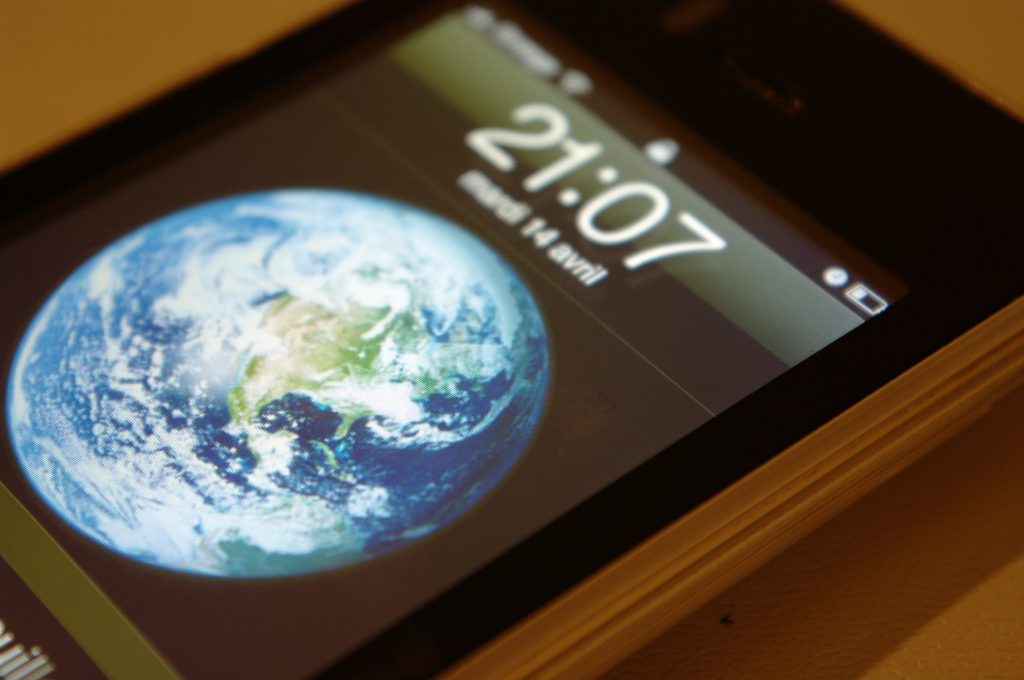Smartphones are now everywhere, but the fast-paced changes in how we use computers will continue to produce new and better devices. Ahead is the era of ‘augmented reality,’ in which we find ways to meld our digital data with the real world around us. While these changes will show up in tablets and smartphones first, they’ll rapidly create a new kind of mobile device, small and wearable computers that exploit their connections to the Internet to deliver what we need.
Many of us have become used to asking our smartphones, sometimes through screen apps or through the iPhone’s voice-activated Siri program, how to find things. A properly equipped smartphone easily does away with conventional maps. Consider the Wikitude World browser, which uses augmented reality overlays to show you the scene in front of you with its camera while supplying digital information. Walking down a crowded street, you can look at the scene through your smartphone and quickly spot the location of banks, coffee shops and restaurants — you can download specific data sets for whatever city you happen to be traveling in.
Right now using augmented reality on a smartphone means stopping to stare at a screen, but the direction is toward ease of use and less distraction. Apple is said to be experimenting with prototypes of wearable devices like a wrist-based communicator that would work through voice recognition using Siri, tapping the smartphone’s computing resources while allowing the device itself to stay in your pocket or purse. Here the overlay is not visual, but you are wrapped in digital information wherever you go, able to ask for directions, get reviews and communicate.
But fasten your seat belt, because this is going to be a wild ride. Google is developing a new kind of augmented reality glasses that can stream information from a tiny screen just inches from your eye. Here we may be able to do away with the separate smartphone altogether, for these glasses, using the Android operating system, would include a fast data connection and a variety of sensors. Although Google is not yet commenting on the glasses project, a recent report in the New York Times said they may go on sale as early as the end of this year at prices comparable to current smartphones, meaning somewhere in the range from $250 to $600.
Slip on a pair of augmented reality glasses and the world in front of you is overlaid with information, all generated from the wide variety of Google software products available today. Because they’re equipped with GPS, the glasses can tap Google Maps to show you where you are and highlight nearby destinations, as well as allowing you to check the location of friends. Given the success of Apple’s Siri, we may see voice recognition in some form as well. Take this technology to its logical conclusion and future renditions may get down to contact-lens size.
All this sounds happily futuristic, but it comes with the usual batch of privacy concerns, for as computing gets ever smaller and more powerful, people have the ability to use it without our knowledge. Glasses with an augmented reality overlay will clearly have the ability to photograph people without the subject’s consent. On a broader social level, another layer of technology between us and the real world reinforces an ‘us and them’ mentality, as those wearing the devices experience their surroundings in an entirely different way than the rest of us. Picture the oblivious iPod-enabled pedestrian and magnify the effect many times over.
But expect breakthroughs as well as worries. In Jerusalem, a man named Amir Amedi has created what he calls a Sensory Substitution Device, which uses a camera and computer to translate data into sound. Amazingly, blind people using the device, which contains wrap-around glasses and headphones, can translate the ‘soundscapes’ it produces into information about their surroundings. MRI scans show that dormant parts of the visual cortex are activated by the technology, which brings a new kind of ‘vision’ to those congenitally unable to see.
The digital tools we wear will become a major part of our lives in the next ten years, with computing doing what some futurists have long claimed it would do, essentially disappearing into the background. As the room-sized computers of the 1950s gave way to desktop PCs, so even our smartphones will dwindle and distribute their resources to customized accessories that can be donned or shed at will. Augmented reality is going to be a confusing disruption, but it’s one that our grandchildren will wonder how we ever managed to do without.









